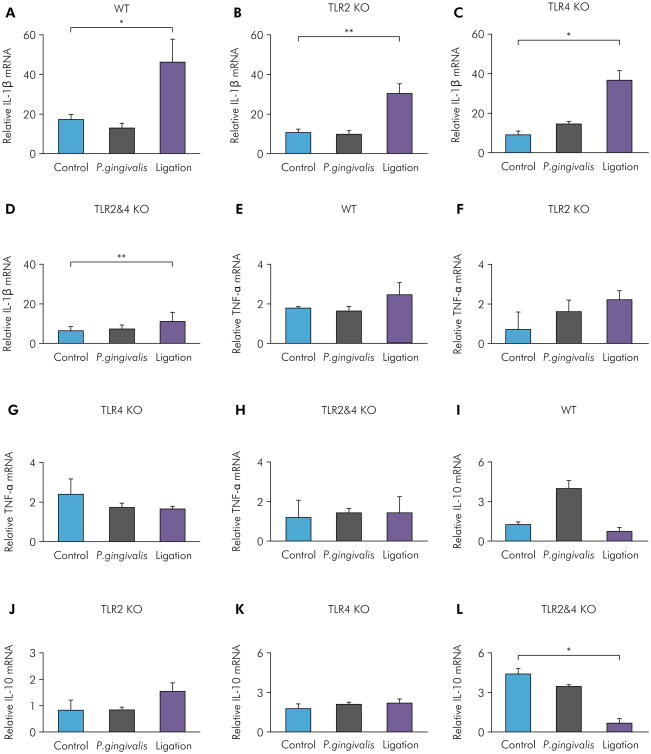Figure 4.
Gingival IL-1β, TNF-α, and IL-10 mRNA levels of P. gingivalis-induced and ligation-induced experimental periodontitis in WT, TLR2 KO, TLR4 KO, and TLR2&4 KO mice. Gingival IL-1β mRNA levels were determined by real-time PCR in the control group, the P. gingivalis infection group, and the ligation group of WT mice (A), TLR2 KO mice (B), TLR4 KO mice (C), and TLR2&4 KO mice (D) (means ± SE, n = 5 mice per group, *p < 0.05, **p < 0.01). Gingival TNF-α mRNA levels were determined by real-time PCR in the control group, the P. gingivalis infection group, and the ligation group of WT mice (E), TLR2 KO mice (F), TLR4 KO mice (G), and TLR2&4 KO mice (H) (means ± SE, n = 5 mice per group). Gingival IL-10 mRNA levels were determined by real-time PCR in the control group, the P. gingivalis infection group, and the ligation group of WT mice (I), TLR2 KO mice (J), TLR4 KO mice (K), and TLR2&4 KO mice (L) (means ± SE, n = 5 mice per group, *p < 0.05, **p < 0.01).

